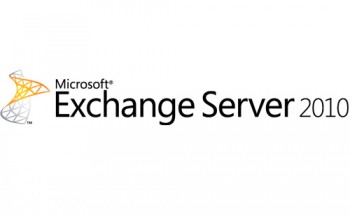
Server Infrastructure Overview Report Document
I was asked recently by a reader what questions they should ask when looking into taking over a support contract for an existing IT support company.
To ensure that information is gathered correctly this document is split into a number of subsections, these include Server Hardware and Server Software, Active Directory configuration, Microsoft Exchange Organisation structure and configuration.
These subsections will gather information on Hardware Specifications, Operating System versions and patch levels, Application Software, Networking information and licensing information.
At the end of the article you can download the questions in Excel format.
Server Infrastructure
In this section we ask the client for information on the overall server infrastructure with hardware, software and site topology.
Topology |
|
| How many physical sites do you have | |
| What are the location of these sites | |
| What is the primary site | |
| At each site how many employees | |
| How many of these employees access the IT infrastructure | |
| Number of Servers | |
| Number of Desktops/Laptops | |
| Site Connectivity (ADSL, VPN, Leased Line) | |
| Additional Information | |
Server Hardware Specification |
|
| Is the server Physical or Virtual and if Virtual what hypervisor (VMware, Hyper V) | |
| What is the server vendor and model (Only if Physical) | |
| Asset Tag /Serial | |
| Warranty | |
| Firmware Date | |
| Server RAID Configuration (Only if Physical) | |
| CPUs + Cores | |
| Memory | |
| Hard Disk Storage | |
| Amount of Volumes | |
Server Software |
|
| Server Hostname | |
| Server License model (Standard, Enterprise, Datacentre) | |
| Server OS Vendor (Microsoft, Linux etc) | |
| Server OS Version | |
| Server OS Build (Service Pack Level) | |
| Find what updates are installed – run Get-WmiObject -Class WIN32_QuickFixEngineering | |
| Member of Active Directory Domain | |
| Server Role (Domain Controller, File Server, Exchange Server, SQL, Certificate Server) | |
| IP Address | |
| Subnet Mask | |
| Gateway | |
| DNS Servers | |
Domain Controller Specific |
|
| Does the Domain Controller Run DHCP | |
| DHCP Scope Information | |
| Does the Domain Controller Run DNS | |
| Are DNS updates Secure or Non Secure | |
| List the Name Servers | |
| What are the ISP DNS forward addresses | |
| What FSMO Roles does the Domain Controller run | |
| Is the Domain Controller and Global Catalogue Server | |
| Any Additional Roles? Federation, Certificate Services etc | |
File Server Specific |
|
| What shares are located on this server | |
| What percentage of drive space is free on share volumes | |
| How much data is on the server | |
| How many printers are served from this server | |
General Server Specific |
|
| Does the server run automatic updates | |
| Where does the server update from. Microsoft/WSUS | |
| Does the server connect to the internet. Proxy/Direct | |
| Does the server run AV protection | |
| What AV protection does the server use | |
| What is the AV dat update version on the server | |
| What is the frequancy of the AV updates | |
| Does the server have any supplementary roles | |
| How do you backup these servers | |
| What is the backup frequancy of the servers | |
| How long is the data retained | |
| Is the data retained off site | |
| How are servers monitored, (Solarwinds, SCOM) |
With the server information gathered we can now ask specific questions with regards to how Active Directory is configured.
Active Directory Configuration |
|
Forest/Domain and Schema |
|
| Describe the Active Directory forest topology at a high level | |
| Describe the forest and domain infrastructure, e.g. single site, single forest | |
| If multiple Active Directory sites please list them | |
| What DNS namespace (Fully Qualified Domain Name) is used for the Active Directory forest in the topology | |
| What NetBIOS namespace is used for the domain in the Active Directory environment | |
| What is the Active Directory Functional Level in use within the domain | |
| What Group Policies are implemented, please list and describe them | |
| If running certificate services, please describe what services are using certificates and what type of certificate | |
| Do Servers and Clients have a fixed naming convention | |
| Where are the FSMO roles located | |
| Are there any Trust Relationships in place with other domains | |
| If there are multiple sites what are the intersite transport links | |
| Is replication between domain controllers healthty (run DCDiag per domain controller) | |
| Are you currently using AD Federation Services (Office 365, Azure) | |
| How is time syncronisation managed | |
AD Site Configuration |
Sites mapping to physical infrastructure |
| Site link bridging configuration | |
| Preferred bridgehead configuration | |
| Site link schedule, cost configuration | |
| IP subnet definition and mapping to sites | |
| Connection objects | |
Users/Groups/OUs |
|
| Does Active Directory have a user naming convention | |
| What is the naming convention | |
| Does Active Directory have an organised OU structure | |
| What is the OU structure, site based? Department Based? | |
| How many Active Directory User accounts are there | |
| How many Active Directory User accounts are live | |
| How many Active Directory User accounts are disabled | |
| Are there any security groups created | |
| What users are memebers of what security groups | |
| Are security groups used to delegate access to resources | |
| Does the domain have a password policy, if so what is it | |
| Can you provide a list of domain administrators | |
| Is there a user policy in place |
If the infrastructure you are working on runs Microsoft Exchange then you should gather the following information on the organisation.
Exchange Environment |
|
| Please give a high level overview of you Exchange organisation. | |
Servers |
|
| Number of Exchange Servers in Total | |
| Exchange 2003 | |
| Exchange 2007 | |
| Exchange 2010 | |
| Exchange 2013 | |
| If Exchange 2007- 2013 please give Exchange roles: CAS, HUB, MBX per Server | |
| If multiple CAS servers is there a CAS array in place, if not is a load balancer used. | |
| If CAS array what is the Outlook Anywhere URL and virtual IP of URL | |
| How many datastores are there | |
| Are these datastores spread across multiple MBX servers | |
| If spread across multiple MBX servers, is there a DAG configuration in place | |
| What is the DAG configuration | |
| What is the DAG Witness Server | |
| How many mailboxes are there | |
| How many room/conference mailboxes are there | |
| How many shared mailboxes | |
| Are the datastores stored on a local dedicated volume/SAN/NAS | |
| Where are each datastore logs located | |
| How large is each datastore | |
| What percentage of space is free on each datastore volume | |
| What is the largest mailbox and the average mailbox size | |
| What is the average message size | |
Organisation Configuration Section |
|
| Does the company have a email usage policy | |
| What is the GAL Generation server | |
| What is the OAB Generation server | |
| Is GAL segmentation configured | |
| Single or multiple address lists | |
| Please provide a breakdown of what users are in what distribution list | |
| What is the maximun email send and recieve size | |
| Are mailbox qoutas enabled and if so what are they | |
| Any transport rules created and if so what are they | |
| What is the mailbox retention configuration for delete items | |
| Is there an archiving policy in place | |
| Are any disclaimers or signatures configured | |
| Is any software used to scan content before leaving the organisation | |
| Is email filtered externaly before entering the system | |
| Are public folders enabled | |
| What is the public folder replication topology | |
| Is a public SSL certificate used, if so please list the SANs (Subject Alternative Names) | |
| How many accepted email domains | |
| What is the email address policy | |
| What is the internal OWA address | |
| What is the external OWA address | |
| Is FAX integrated with Exchange | |
| Is Unified Comms integrated with Exchange | |
| Is Anti Virus integrated with Exchange (i.e Trend, Mcafee) | |
Client Section |
How many Microsoft Office 2016 (Please specify Service Pack level) |
| How many Microsoft Office 2013 (Please specify Service Pack level) | |
| How many Microsoft Office 2010 (Please specify Service Pack level) | |
| How many 2007 Microsoft Office system (Please specify Service Pack level) | |
| How many Microsoft Office 2003 (Please specify Service Pack level) | |
| How many Microsoft Office XP (Please specify Service Pack level) | |
| How many Windows Phone 8 | |
| How many Windows Phone 7.5 | |
| How many Windows Phone 7 | |
| How many Windows Mobile Version 6.5 | |
| How many Windows Mobile Version 6.1 | |
| How many Windows Mobile Version 6 | |
| How many Windows Mobile Version 5 | |
| How many Windows Mobile < 5 (please specify) | |
| How many BlackBerry |
With the above gathered you should be able to gather a pretty comprehensive overview of your clients infrastructure.







